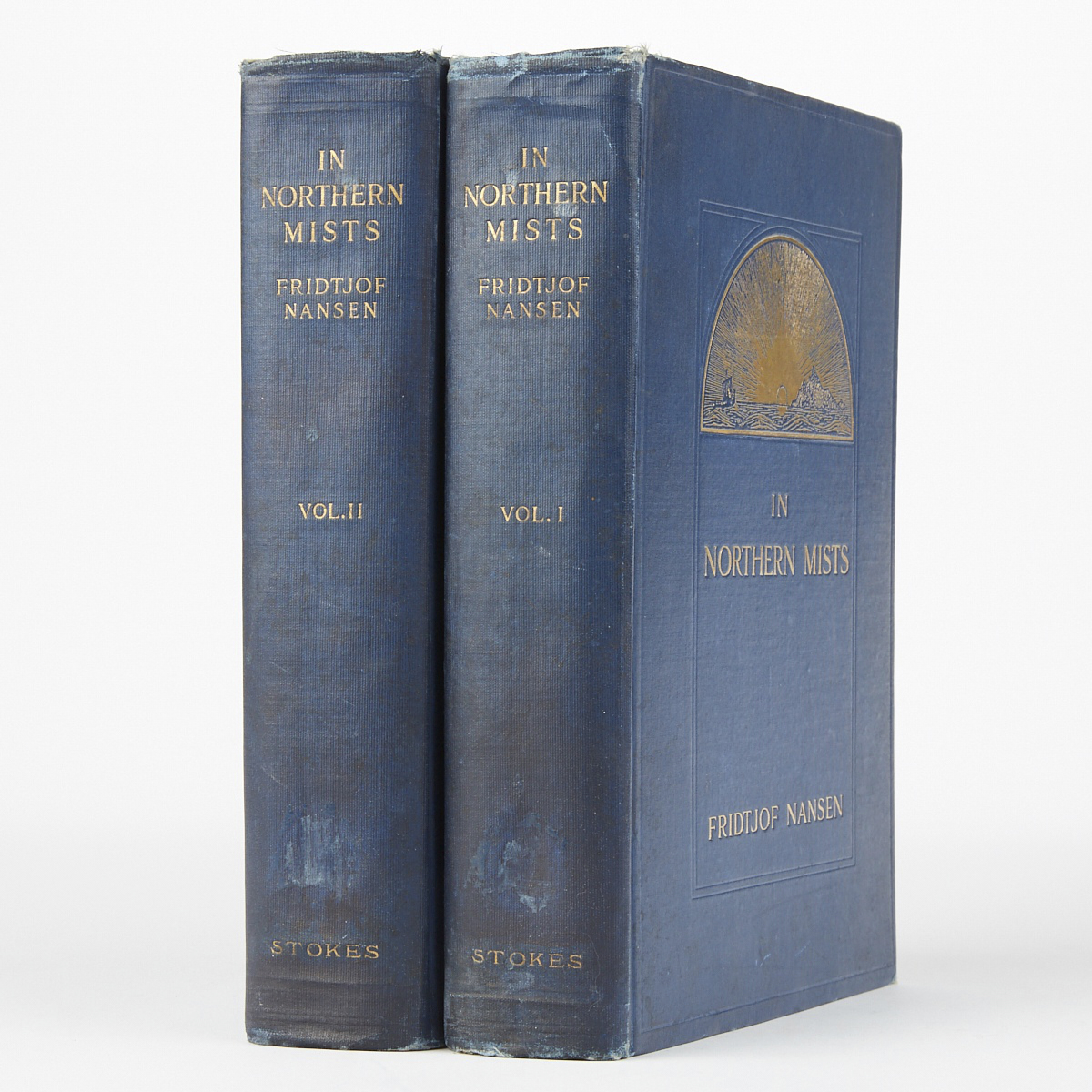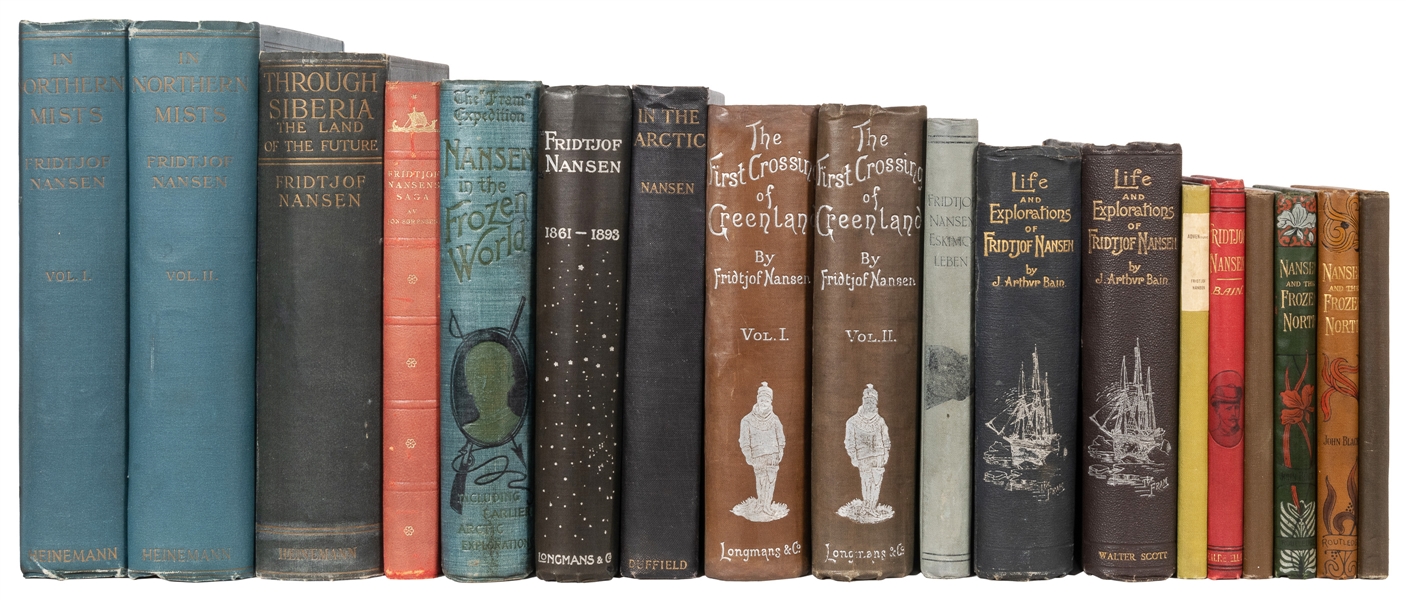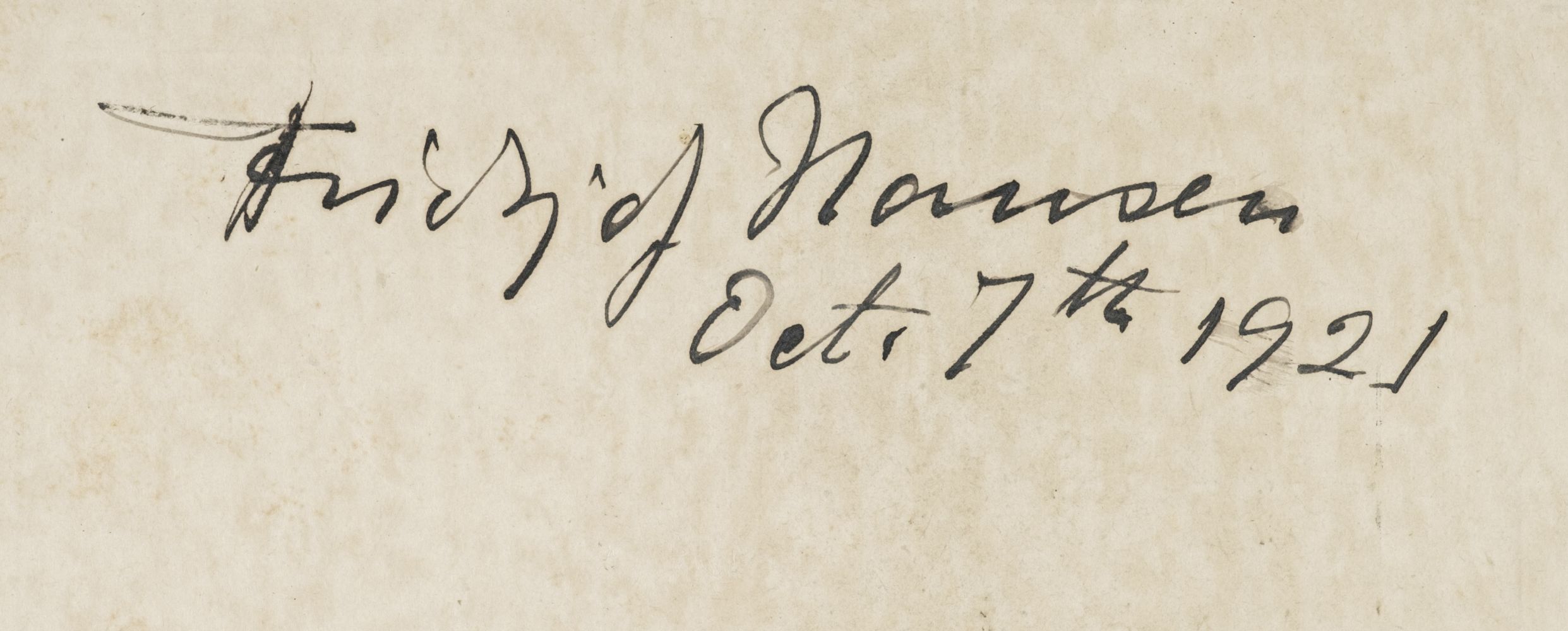FRIDTJOF NANSEN (1861-1930). Autograph letter signed to the zoologist [William Evans] Hoyle, Bergen, 14 January 1888 , discussing the capabilities of an English friend of Hoyle who wished to be included in Nansen's forthcoming expedition to Greenland. acknowledging the importance of the qualities of courage and endurance which the man posessed and the pleasure he would have derived from including an Englishman in the chosen company, but declining to invite him on the grounds that to do so 'would be to run too great a risk'. For such an expedition as this, the success of which is entirely based upon clever snow-shore-walkers, it is necessary to chose [ sic ] the best walkers you can find...to be a really good walker it is almost necessary to have been borne [ sic ] 'on the snow-shoes'...I must chose the best people I can find', sending a plan [not present] of his proposed rounte 'for the Greenland-trip' and asking where Hoyle intended to go when his work on the Challenger Report was finished, 4 pages, 8vo , some wear at centre fold of second leaf. Nansen and five companions crossed the Greenland Ice Cap in the summer of 1888. 'In the technique of Polar travels, Nansen broke new ground...It was the launching of the Norwegian school of Polar exploration...the firse identifiable goal attained in high latitudes since the discovery of the North-West Passage...To the world, it was a staggering , heroic, almost incomprehensible achievement', (R. Huntford, Scott and Amundsen , 1993, pp. 23-25). Nansen's early biographer, Arthur Bain, wrote of this journey, 'To his skill the long Norwegian snow-shoes, or ski is traceable much of the success that attended his crossing of Greenland'. ( Life and Explorations of Fridtjof Nansen , 1897). Hoyle was working on the publication of scientific information gathered on the voyage of HMS Challenger. His report on the Cephalopoda (molluses) was published in 1886.
FRIDTJOF NANSEN (1861-1930). Autograph letter signed to the zoologist [William Evans] Hoyle, Bergen, 14 January 1888 , discussing the capabilities of an English friend of Hoyle who wished to be included in Nansen's forthcoming expedition to Greenland. acknowledging the importance of the qualities of courage and endurance which the man posessed and the pleasure he would have derived from including an Englishman in the chosen company, but declining to invite him on the grounds that to do so 'would be to run too great a risk'. For such an expedition as this, the success of which is entirely based upon clever snow-shore-walkers, it is necessary to chose [ sic ] the best walkers you can find...to be a really good walker it is almost necessary to have been borne [ sic ] 'on the snow-shoes'...I must chose the best people I can find', sending a plan [not present] of his proposed rounte 'for the Greenland-trip' and asking where Hoyle intended to go when his work on the Challenger Report was finished, 4 pages, 8vo , some wear at centre fold of second leaf. Nansen and five companions crossed the Greenland Ice Cap in the summer of 1888. 'In the technique of Polar travels, Nansen broke new ground...It was the launching of the Norwegian school of Polar exploration...the firse identifiable goal attained in high latitudes since the discovery of the North-West Passage...To the world, it was a staggering , heroic, almost incomprehensible achievement', (R. Huntford, Scott and Amundsen , 1993, pp. 23-25). Nansen's early biographer, Arthur Bain, wrote of this journey, 'To his skill the long Norwegian snow-shoes, or ski is traceable much of the success that attended his crossing of Greenland'. ( Life and Explorations of Fridtjof Nansen , 1897). Hoyle was working on the publication of scientific information gathered on the voyage of HMS Challenger. His report on the Cephalopoda (molluses) was published in 1886.















Testen Sie LotSearch und seine Premium-Features 7 Tage - ohne Kosten!
Lassen Sie sich automatisch über neue Objekte in kommenden Auktionen benachrichtigen.
Suchauftrag anlegen